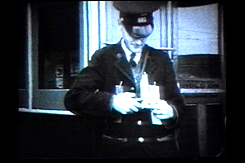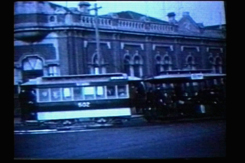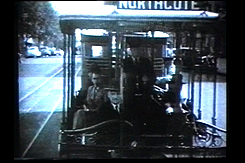It
all started in 1885 when the first cable tram service was established in the heart
of our city. Until then, apart from the steam train and ferry for longer trips,
we still relied on the horse and bicycle to travel around town.
In those
days Francis B. Clapp was the transport entrepreneur who got the Melbourne cable
trams' steam turbines pumping. No doubt motivated by the pound, and fascinated
by the latest technology, Clapp travelled to California. He was obviously impressed
with what he saw and decided to build an improved version of San Francisco's steam-driven
cable car system in Melbourne.
So
robust was Clapp's cable tram service that parts of it were still alive until
1940. One might say Clapp, as a result of his motivation and passion, could be
considered Australia's first ever official tram lover.
One
hundred and fourteen years later the spirit of Clapp rides again. Melbourne's
tram system is being privatised once more and today's tram lovers are reminiscing.
"Now
it's gone full circle," says Norm Cross, a Melbourne tramway employee for
forty years. Norm points out that after Clapp's system was established under a
lease agreement with the Melbourne City Council, all the major councils wanted
to have their own electric tram services after the turn of the [20th] century.
But
with a hotchpotch of steam-driven cable tram services around the city's main arteries,
and electric trams in most major major inner municipalities, there was a decision
to amalgamate them under one authority. This decision was precipitated by the
fact that Clapp's cable tram lease expired in 1916. Thus the Melbourne & Metropolitan
Tramways Board (M&MTB) was born in 1919.
Eighty
years later we now have the privately-backed Yarra Trams (east and west routes)
and Swanston Trams (north and south routes).
Norm
Cross is just one of many who have worked for a lifetime on the Melbourne system,starting
as an apprentice fitter and turner at Preston tramway workshops in the 1950s.
Whether or not he realised it the young Norm joined the M&MTB at a time when
the majority of large cities around the world decided to scrap their ageing tram
services in favour of buses.
Also
contributing to the demise of the tram was the rising post-war popularity of the
motor car. Norm admits after working at Preston for so many years he has witnessed
a lot of changes.
The
Melbourne tramway was also a welcome employer of many of the southern European
immigrants who came to find a new life in Australia in the 1950s and 1960s. Italian-born
Mario Sirianni was one of these 'New Australians' who came to Melbourne forty-three
years ago with negligible English language skills.
After
a string of short-duration labouring jobs Mario, who'd been studying English after
hours, obtained his first steady job as a tram conductor. Working on the trams
was a great way to meet people and improve his English.
Following
nine years of tram conducting Mario went on to be a bus driver and then a storeman
for the Public Transport Corporation (PTC). Upon his retirement Mario had given
thirty-four years of service to the PTC.
"After
twenty-five years you got a silver tray. Working on the trams was a 'security
job' and a lot of people got these trays as reward for long service," says
Mario, proudly holding a shiny round memento inscribed with his name.Cont'd
on Page 2>
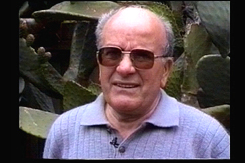
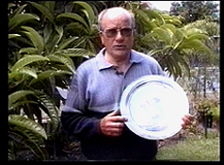
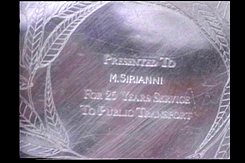
Mario
Siiranni(Left) Mario with his PTC 25Years Long Service Award(Centre) Personalised
inscription on his award(Right)
This article (c) Paul Norris www.norrismediaproductions.com
